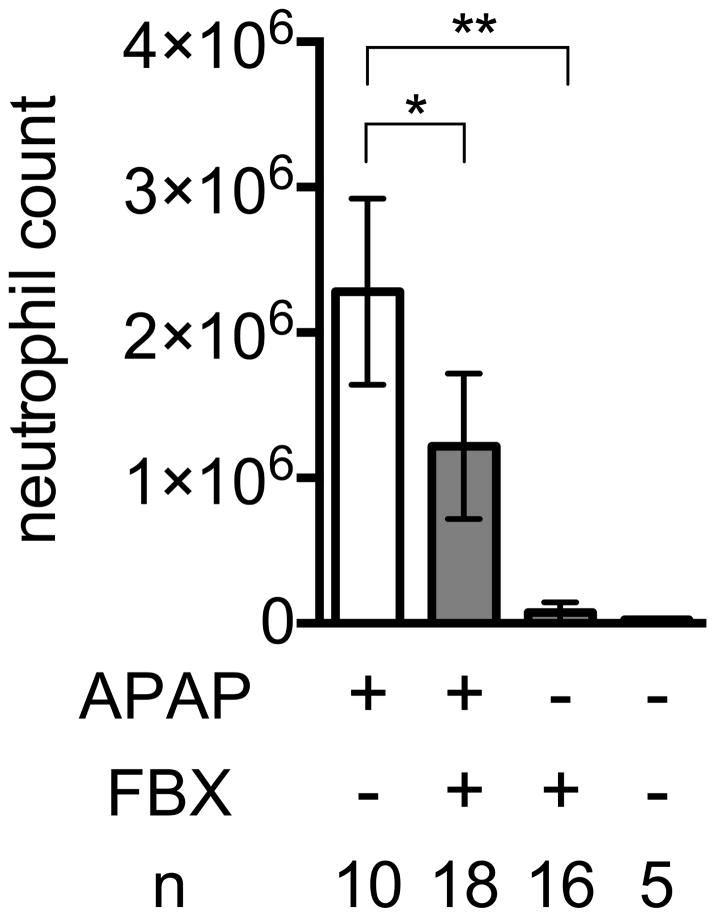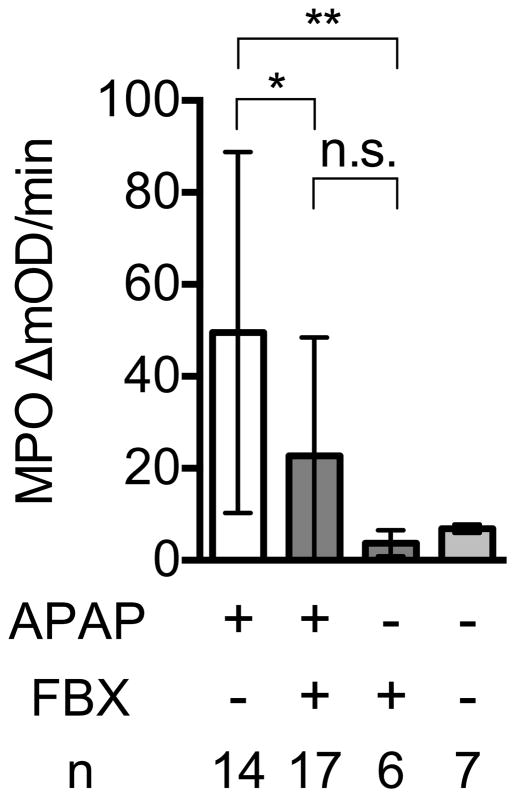Fig. 4. Febuxostat inhibits acute liver inflammation induced by acetaminophen.
Fig. 4A
Neutrophil recruitment into damaged liver induced by acetaminophen in the presence or absence of febuxostat (FBX) treatment
C57BL/6 mice with or without pretreatment of febuxostat (FBX) were given 300mg/kg acetaminophen intraperitoneally and after 18 h their livers were perfused with HBSS buffer and digested with collagenase. The number of neutrophils and macrophages in nonparenchymal cells of their digested liver homogenates was quantified by flow cytometry. Means and S.D. were calculated from the accumulated data of 5 independent experiments. In individual experiments the number of mice per condition was 2–4 for experimental groups and 1 in the untreated controls. The bar shows the mean of the data and the limiting bars show the standard deviation. (n = total number of mice from the multiple experiments for each group). *,** P<0.05 (one-way ANOVA)
Fig. 4B
Effect of Febuxostat on myeloperoxidase (MPO) activity in acetaminophen-damaged livers.
18 h after acetaminophen administration, livers were perfused with HBSS buffer and homogenated in MPO buffer. After adding the substrate O-dianisidine and the developer H2O2, the kinetic change of OD450nm in liver homogenates (200 mg/ml) for 2 min 20 sec was analyzed on a plate reader. Means and S.D. were calculated from the accumulated data of 5 independent experiments. In individual experiments the number of mice per condition was 2–4 for experimental groups and 1–2 in the untreated controls. The bar shows the mean of the data and the limiting bars show the standard deviation. (n = total number of mice from the multiple experiments for each group). *,** P<0.05 (one-way ANOVA)


